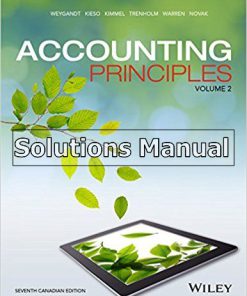1INTRODUCTION
1.1 Historical Development of Structural Concrete
1.2 Basic Hypothesis of Reinforced Concrete
1.3 Analysis versus Design of Sections
2CONCRETE-PRODUCING MATERIALS
2.1 Introduction
2.2 Portland Cement
2.3 Water and Air
2.4 Aggregates
2.5 Admixtures
Selected References
3CONCRETE
3.1 Introduction
3.2 Proportioning Theory—Normal Strength Concrete
3.3 High-Strength High-Performance Concrete Mixtures Design
3.4 PCA Method of Mixture Design
3.5 Estimating Compressive Strength of a Trial Mixture Using the Specified
Compressive Strength
3.6 Mixture Designs for Nuclear-Shielding Concrete
3.7 Quality Tests on Concrete
3.8 Placing and Curing of Concrete
3.9 Properties of Hardened Concrete
3.10 High-Strength Concrete
Selected References
Problems for Solution
4REINFORCED CONCRETE
4.1 Introduction
4.2 Types and Properties of Steel Reinforcement
4.3 Bar Spacing and Concrete Cover for Steel Reinforcement
4.4 Concrete Structural Systems
4.5 Reliability and Structural Safety of Concrete Components
4.6 ACI Load Factors and Safety Margins
4.7 Design Strength versus Nominal Strength: Strength Reduction Factor
4.8 Quality Control and Quality Assurance
Selected References
5FLEXURE IN BEAMS
5.1 Introduction
5.2 The Equivalent Rectangular Block
5.3 Strain Limits Method for Analysis and Design
5.4 Analysis of Singly Reinforced Rectangular Beams for Flexure
5.5 Trial-and-Adjustment Procedures for the Design of Singly Reinforced Beams
5.6 One-Way Slabs
5.7 Doubly Reinforced Sections
5.8 Nonrectangular Sections
5.9 Analysis of T and L Beams
5.10 Trial-and-Adjustment Procedure for the Design of Flanged Sections
5.11 Concrete Joist Construction
5.12 SI Expressions and Example for Flexural Design of Beams
Selected References
Problems for Solution
6SHEAR AND DIAGONAL TENSION IN BEAMS
6.1 Introduction
6.2 Behavior of Homogeneous Beams
6.3 Behavior of Reinforced Concrete Beams as Nonhomogeneous Sections
6.4 Reinforced Concrete Beams without Diagonal Tension Reinforcement
6.5 Diagonal Tension Analysis of Slender and Intermediate Beams
6.6 Web Steel Planar Truss Analogy
6.7 Web Reinforcement Design Procedure for Shear
6.8 Examples of the Design of Web Steel for Shear
6.9 Deep Beams: Non-Linear Approach
6.10 Brackets or Corbels
6.11 Strut and Tie Model Analysis and Design of Concrete Elements
6.12 SI Design Expressions and Example for Shear Design
Selected References
Problems for Solution
7TORSION
7.1 Introduction
7.2 Pure Torsion in Plain Concrete Elements
7.3 Torsion in Reinforced Concrete Elements
7.4 Shear–Torsion–Bending Interaction
7.5 ACI Design of Reinforced Concrete Beams Subjected to Combined Torsion, Bending,
and Shear
7.6 SI Metric Torsion Expressions and Example for Torsion Design
Selected References
Problems for Solution
8SERVICEABILITY OF BEAMS AND ONE-WAY SLABS
8.1 Introduction
8.2 Significance of Deflection Observation
8.3 Deflection Behavior of Beams
8.4 Long-Term Deflection
8.5 Permissible Deflections in Beams and One-Way Slabs
8.6 Computation of Deflections
8.7 Deflection of Continuous Beams
8.8 Operational Deflection Calculation Procedure and Flowchart
8.9 Deflection Control in One-Way Slabs
8.10 Flexural Cracking in Beams and One-Way Slabs
8.11 Tolerable Crack Widths
8.12 ACI 318 Code Provisions for Control of Flexural Cracking
8.13 SI Conversion Expressions and Example of Deflection Evaluation
Selected References
Problems for Solution
9COMBINED COMPRESSION AND BENDING: COLUMNS
9.1 Introduction
9.2 Types of Columns
9.3 Strength of Non-Slender Concentrically Loaded Columns
9.4 Strength of Eccentrically Loaded Columns: Axial Load and Bending
9.5 Strain Limits Method to Establish Reliability Factor and Analysis and Design
of Compression Members
9.6 Whitney’s Approximate Solution in Lieu of Exact Solutions
9.7 Column Strength Reduction Factor
9.8 Load–Moment Strength Interaction Diagrams (P–M Diagrams) for Columns Controlled
by Material Failure
9.9 Practical Design Considerations
9.10 Operational Procedure for the Design of Nonslender Columns
9.11 Numerical Examples for Analysis and Design of Nonslender Columns
9.12 Limit State at Buckling Failure (Slender or Long Columns)
9.13 Moment Magnification: First-Order Analysis
9.14 Second-Order Frame Analysis and the P-Δ effect
9.15 Operational Procedure and Flowchart for the Design of Slender Columns
9.16 Compression Members in Biaxial Bending
9.17 SI Expressions and Example for the Design of Compression Members
Selected References
Problems for Solution
10BOND DEVELOPMENT OF REINFORCING BARS
10.1 Introduction
10.2 Bond Stress Development
10.3 Basic Development Length
10.4 Development of Flexural Reinforcement in Continuous Beams
10.5 Splicing of Reinforcement
10.6 Examples of Embedment Length and Splice Design for Beam Reinforcement
10.7 Typical Detailing of Reinforcement and Bar Scheduling
Selected References
Problems for Solution
11DESIGN OF TWO-WAY SLABS AND PLATES
11.1 Introduction: Review of Methods
11.2 Flexural Behavior of Two-Way Slabs and Plates
11.3 The Direct Design Method
11.4 Distributed Factored Moments and Slab Reinforcement by the Direct Design Method
11.5 Design and Analysis Procedure: Direct Design Method
11.6 Equivalent Frame Method for Floor Slab Design
11.7 SI Two-Way Slab Design Expressions and Example
11.8 Direct Method of Deflection Evaluation
11.9 Cracking Behavior and Crack Control in Two-Way-Action Slabs and Plates
11.10 Yield-Line Theory for Two-Way Action Plates
Selected References
Problems for Solution
12FOOTINGS
12.1 Introduction
12.2 Types of Foundations
12.3 Shear and Flexural Behavior of Footings
12.4 Soil Bearing Pressure at Base of Footings
12.5 Design Considerations in Flexure
12.6 Design Considerations in Shear
12.7 Operational Procedure for the Design of Footings
12.8 Examples of Footing Design
12.9 Structural Design of Other Types of Foundations
Selected References
Problems for Solution
13CONTINUOUS REINFORCED CONCRETE STRUCTURES
13.1 Introduction
13.2 Longhand Displacement Methods
13.3 Force Method of Analysis
13.4 Displacement Method of Analysis
13.5 Finite-Element Methods and Computer Usage
13.6 Approximate Analysis of Continuous Beams and Frames
13.7 Limit Design (Analysis) of Indeterminate Beams and Frames
Selected References
Problems for Solution
14INTRODUCTION TO PRESTRESSED CONCRETE
14.1 Basic Concepts of Prestressing
14.2 Partial Loss of Prestress
14.3 Flexural Design of Prestressed Concrete Elements
14.4 Serviceability Requirements in Prestressed Concrete Members
14.5 Ultimate-Strength Flexural Design of Prestressed Beams
14.6 Example 14.5: Ultimate-Strength Design of Prestressed Simply Supported Beam
by Strain Compatibility
14.7 Web Reinforcement Design Procedure for Shear
Selected References
Problems for Solution
15LRFD AASHTO DESIGN OF CONCRETE
BRIDGE STRUCTURES
15.1 LRFD Truck Load Specifications
15.2 Flexural Design Considerations
15.3 Shear Design Considerations
15.4 Horizontal Interface Shear
15.5 Combined Shear and Torsion
15.6 Step-by-Step LRFD Design Procedures
15.7 LRFD Design of Bulb-Tee Bridge Deck: Example 15.1
15.8 LRFD Shear and Deflection Design: Example 15.2
Selected References
Problems for Solution
16SEISMIC DESIGN OF CONCRETE STRUCTURES
16.1 Introduction: Mechanism of Earthquakes
16.2 Spectral Response Method
16.3 Equivalent Lateral Force Method
16.4 Simplified Analysis Procedure for Seismic Design of Buildings
16.5 Other Aspects in Seismic Design
16.6 Flexural Design of Beams and Columns
16.7 Seismic Detailing Requirements for Beams and Columns
16.8 Horizontal Shear in Beam–Column Connections (Joints)
16.9 Design of Shear Walls
16.10 Design Procedure for Earthquake-Resistant Structures
16.11 Example 16.1: Seismic Base Shear and Lateral Forces and Moments by the International
Building Code (IBC) Approach
16.12 Example 16.2: Design of Confining Reinforcement for Beam–Column Connections
16.13 Example 16.3: Transverse Reinforcement in a Beam Potential Hinge Region
16.14 Example 16.4: Probable Shear Strength of Monolithic Beam–Column Joint
16.15 Example 16.5: Seismic Shear Wall Design and Detailing
Selected References
Problems for Solution
17STRENGTH DESIGN OF MASONRY STRUCTURES
17.1 Introduction
17.2 Design Principles
17.3 Strength Reduction Factors
17.4 Flexural Strength
17.5 Shear Strength
17.6 Axial Compression Strength
17.7 Anchorage of Masonry Reinforcement
17.8 Prestressed Masonry
17.9 Deflection
17.10 Example 17.9: Detailed Design of CMU Lintel in Seismic Zone
17.11 Example 17.10: Design of Grouted CMU Wall Supporting Beam Lintel of Example 17.9
17.12 Example 17.11: Tension Anchor Design
Selected References
Problems for Solution
APPENDIX A TABLES AND NOMOGRAMS
INDEX














